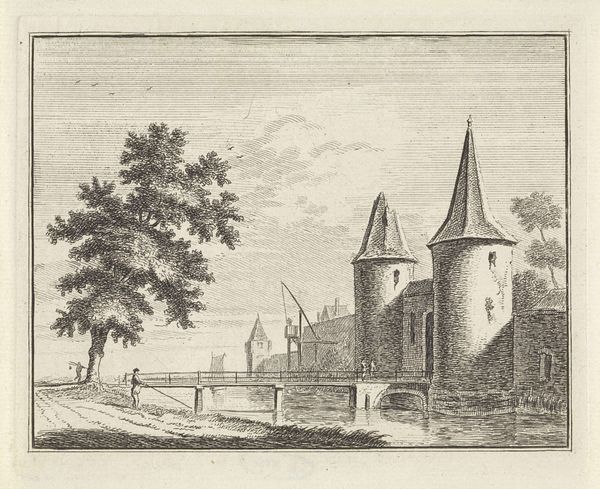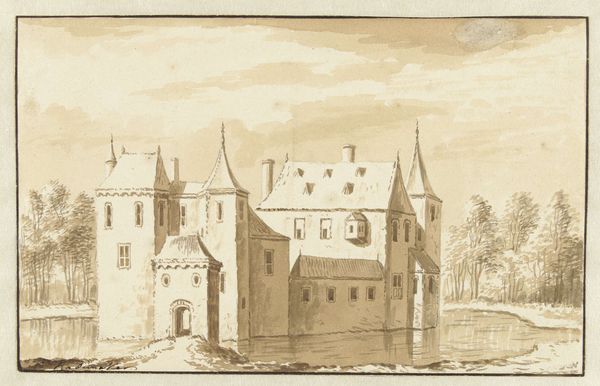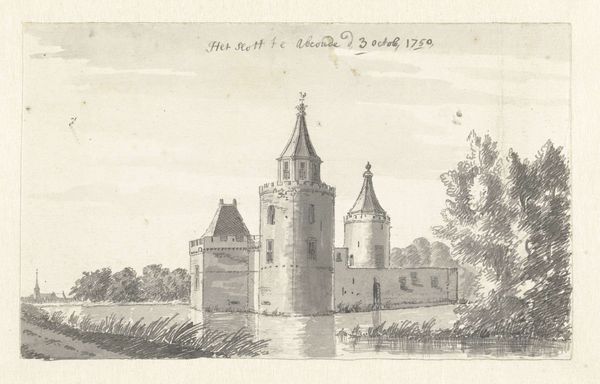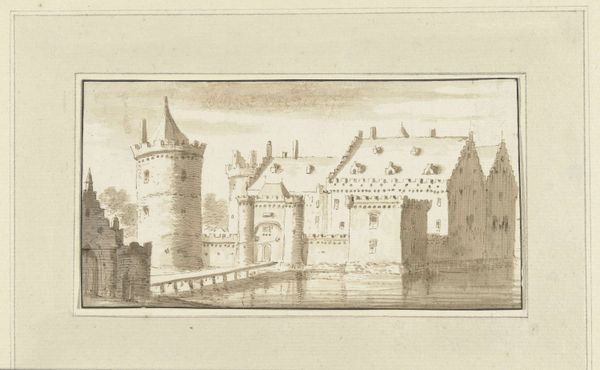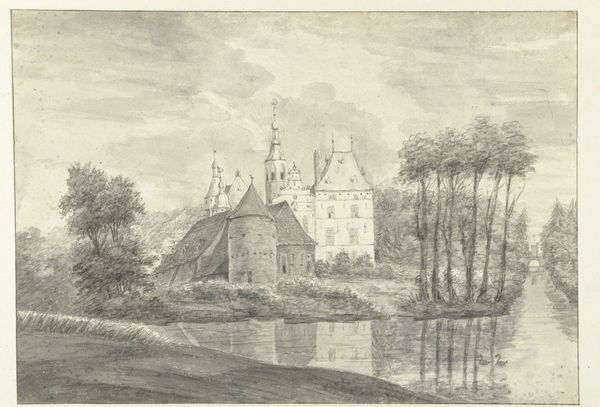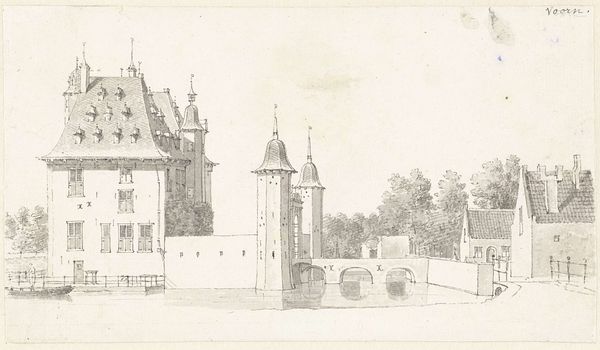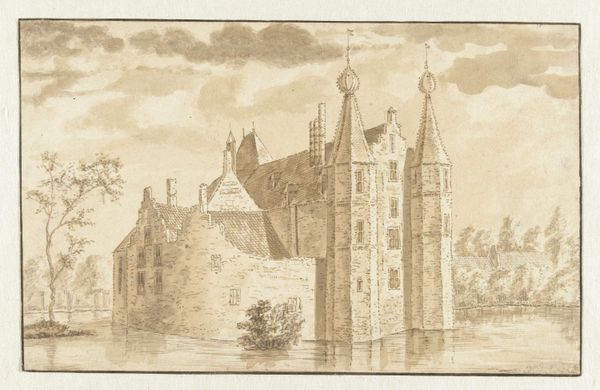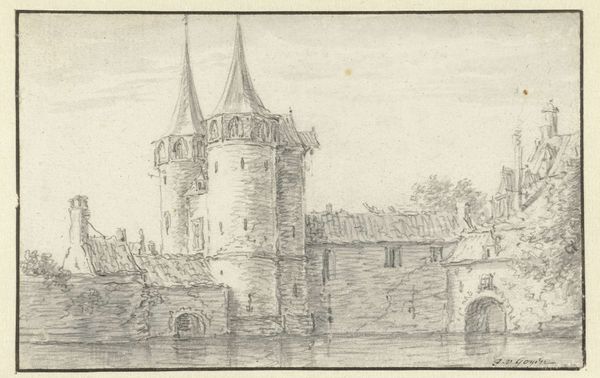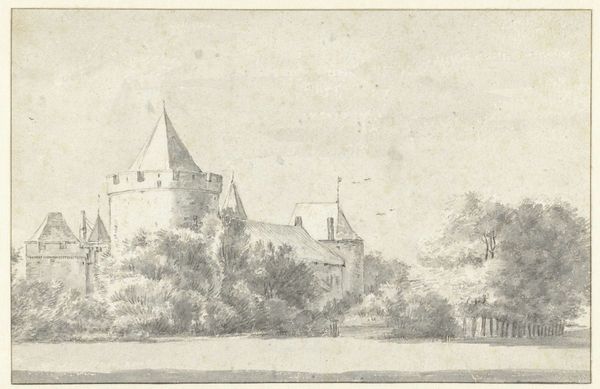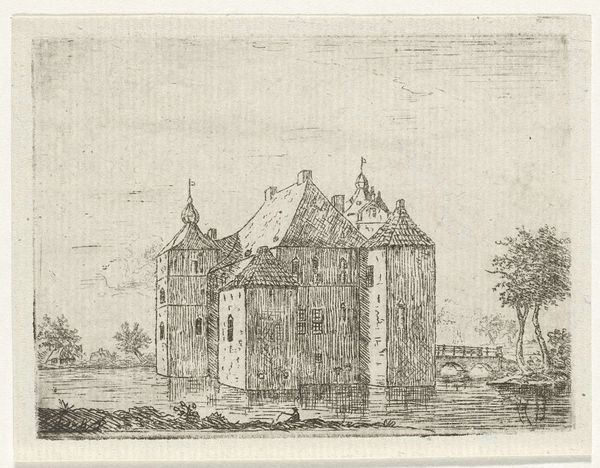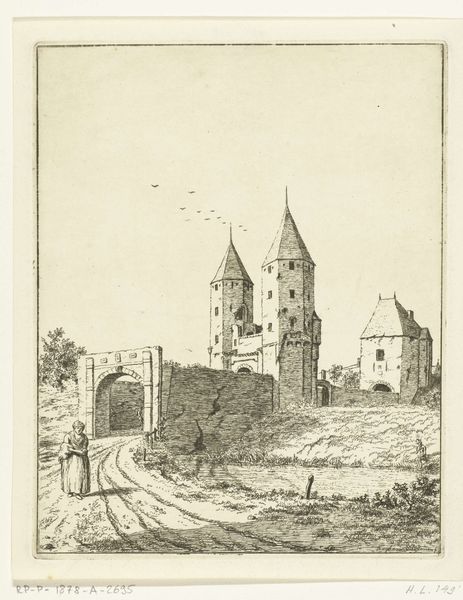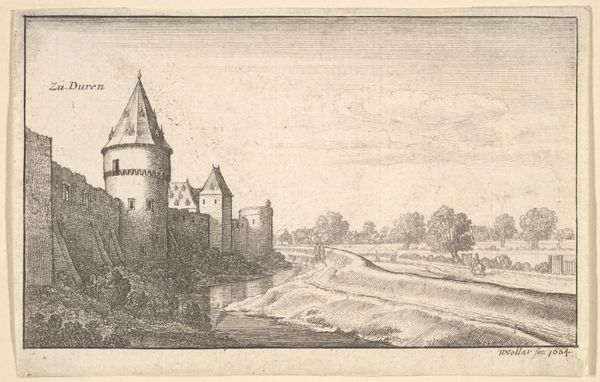
Dimensions: height 120 mm, width 150 mm
Copyright: Rijks Museum: Open Domain
Editor: This is "Rivierlandschap met een kasteel," or "River Landscape with a Castle," by Hendrik Spilman, dating from 1742 to 1784. It’s an engraving, and the detail is just incredible! The castle seems to dominate the composition, but there is a lot of empty space created through the lines. How would you interpret the layout? Curator: The composition strikes me as a carefully constructed arrangement of forms. The castle, centrally positioned, asserts itself through its verticality and mass. Spilman contrasts the solidity of the architecture with the more fluid, horizontal elements—the river, the sky rendered through delicate lines. This interplay, the balance of architectural precision and natural softness, what do you make of that balance? Editor: It feels very staged and intentional. Almost artificial, in a way. Like a theatre backdrop. Curator: Precisely. Note the almost obsessive attention to texture—the rough stonework of the castle, the differing marks indicating light on water. It demonstrates Spilman's skill, but what effect does all that detailed texturing and carefully applied linework have? Editor: It makes the whole image feel more... contained? Controlled, even? Maybe because the use of engraving doesn't suggest gesture the way that painting would. Curator: An astute observation. The choice of engraving reinforces the sense of control. This level of detail, the contrasts—are all these deliberate techniques to evoke a specific mood, perhaps to showcase order amidst the wildness of nature? Editor: I think so. I learned to look beyond the subject and examine the intent behind the visual presentation itself. Curator: Agreed. That attention to formal elements really does offer a gateway into understanding the piece.
Comments
No comments
Be the first to comment and join the conversation on the ultimate creative platform.
